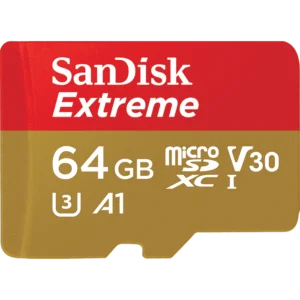
Originally posted on: www.roadtovr.com
While Microsoft has been full steam ahead on the augmented reality side of Windows Mixed Reality via HoloLens, the company has had very little to say in the last year about the VR side of its platform. While it may look like Microsoft has largely given up on the effort, the company tells us that it remains committed.
In late 2017 Microsoft launched its Windows Mixed Reality platform, a software foundation built into Windows 10 which supports VR headsets. The company also convinced a handful of its major PC partners—Dell, Lenovo, Acer, HP, Samsung, and Asus—to launch VR headsets attached to the platform.
For the most part, all of those headsets offered up identical specs, with the only differences being in outward design (Samsung went a bit further with different displays and lenses), leaving little to differentiate them.
Though the Windows VR headsets were the first out of the gate with inside-out tracking, they struggled to compete with incumbents on consumer value, especially in the content department, with many users skipping the Microsoft Store in favor of the much richer content library of SteamVR.
The headsets saw some traction initially, especially as retail discounts made them an attractive budget option. Windows VR headsets peaked at 11.13% of the share of headsets in use on Steam in June 2019, but have been slowly declining since then, down to 8.05% as of January 2020.

Only two of the initial five Windows VR headset makers followed up their initial headsets with new consumer-facing devices (Samsung’s Odyssey+ and HP’s Reverb). Though they brought some improvements to the table, there’s a widespread feeling that essential elements of these headsets—the tracking and controllers—are ‘last-gen’ compared to contemporary devices.
It’s those very elements that Microsoft has not moved forward since the launch of the Windows VR headsets in late 2017.
As the key contributor of the initial reference design (which includes the inside-out tracking system and corresponding controllers) that the Windows VR headsets were based on, Microsoft has shown little interest in modernizing the system so that headsets from its partners can better compete with the likes of Facebook, Valve, and HTC.
But has Microsoft simply given up on Windows VR? You might think so, given the silence over the last year, the apparent discontinuation of all of the original WMR headsets, and the cancellation of Acer’s latest Windows VR headset.
But Microsoft maintains it’s still actively invested in Windows VR. When pressed on the matter—including questions about plans to modernize the tracking system for increased coverage, improve the bulky controllers, and sort out the platform’s VR content strategy—Microsoft didn’t want to talk specifics but assured us that it hasn’t given up.
“[…] Microsoft remains invested in improving the underlying [hardware] platform, Windows Mixed Reality, and look forward to what the future will hold for the industry,” a spokesperson told Road to VR. “We continue to believe that end-users will be interested in taking part in mixed reality through a variety of different entry points along the spectrum, inclusive of virtual reality, augmented reality and everything in between.”
The company also remains committed to the Windows Mixed Reality plugin for SteamVR, which is the essential bridge that allows Windows VR headsets to access Steam content, including the upcoming Half-Life: Alyx.
“As we discussed at MWC 2019,” the spokesperson said, “we continue to develop with the idea of #Open at the forefront—in which we believe that for an ecosystem to truly thrive there should be no barriers to innovation or customer choice.”
It’s not much to go on, but Microsoft tells us there’s more to come for Windows VR, and it’ll have more to say when the time is right.

What is 360 VR Video?
360 video is a video that is recorded in all directions at the same time with multiple cameras. The videos are stitched together either internally in the camera or externally using special software.
It then forms one spherical video that is controlled by the viewer, enabling them to look up, down, right or left at their discretion.
Is 360 Video Virtual Reality?
I want you to be the judge.

Recommended MicroSD Card for use with the Fusion 360 camera
How are you watching your 360 VR Video?
Are you watching on your PC?
Is it Facebook? YouTube? Veer.TV ?
Or better still, are you using your Samsung Galaxy Smartphone with your Samsung Gear VR Headset?


Or are you using another smartphone with a Google Cardboard? Google Daydream?
Leave a comment below. Let us know what you like or don’t like. If you have seen a 360 VR video that you think is awesome, tell us, and we will feature it.
What type of VR Headset do you own? Or do you watch with your computer? Smartphone?

Do you have a VR camera? Ricoh Theta S? Ion360? Samsung 360 gear? Insta360?
And if you are looking for 360 Video Production Services, contact Al Caudullo [email protected]
With 37 years of Media experience, we can Deliver More for You in 360 Video. Click here to see what our customers say about our work
Utilizing state of the art technology, Al Caudullo, and his team has been delivering award-winning compelling productions spanning the globe. Exotic destinations blended with unique cultural experiences give viewers an experience like no other.
From vibrant American cities like San Francisco and Las Vegas to the isolated mountains of Mongolia. From ancient civilizations of Cambodia and Myanmar to the lush resorts of Southeast Asia and beyond. All from the comfort of your living room.



